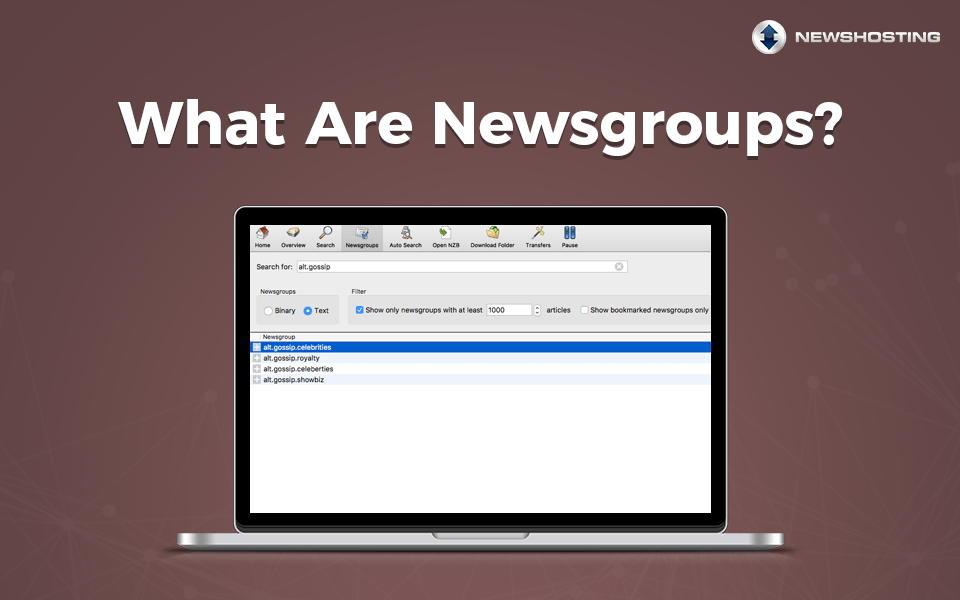As the Internet has become a bigger part of our lives, the prominence of Usenet in the mainstream has decreased. This is a shame. The early history of Usenet established many foundations of online technology and culture that we take for granted today.
Let’s take a moment to explore how three grad students changed the world.
The Earliest History of Usenet
Before the Internet was a global communication network, there was ARPANET, a military project focused on how to connect to a remote computer. You could call this the “pre-history of Usenet.”
ARPANET began in 1966 and, for nearly a decade after, experienced enormous growth. The most important thing that ARPANET contributed has to be the Transmission Control Protocol (TCP). This helped not only define how computers could talk to one another, it made it possible to connect several networks to one another. It allowed for the various, independently developed pieces of the Internet to eventually become a single network.
Enter Jim Ellis, Tom Truscott, and Steve Bellovin.
Ellis and Truscott were graduate students at Duke University. They had an idea for a computer network that would simplify person to person communication. Current technologies existed that allowed for file transfers and electronic mail, but there was no platform to access them.
Working with Bellovin, a grad student at the University of North Carolina, Chapel Hill, they pulled together several Unix tools into a single platform. Finally, they had created the User Network (Usenet), a system that could be accessed on any Unix computer.
The Early History of Usenet
Ellis, Truscott, and Bellovin reached out to UC Berkeley for the next step. At the time, Berkeley was capable of accessing both ARPANET and Usenet, so they would be the perfect bridge. Remember that ARPANET had the capacity to link whole networks together. Berkeley connected Usenet to ARPANET, drastically expanding the reach of both.
A series of discussions were had at a conference hosted by the Advanced Computing Systems Association (USENIX). This not-for-profit organization still exists today and is focused on fostering collaborative research into computing from engineers, scientists, technicians, and system administrators. It’s hard to overstate how important USENIX has been to communication technology.
Near instantaneous communication was becoming a reality for even more people.
Establishing the New Normal
The next few years of Usenet development laid down several common standards.
Have you ever wondered why we use threaded conversations? Where responses to a post are listed under the post and not way down the page? That’s something that was established early in the history of Usenet!
How about the term “spam”? While it seems strange that a computer term would be named after a preserved meat product, it’s actually from a Monty Python sketch. The joke is that the word “spam” is repeated far too much in menu descriptions. Hence, “repeated data with no informational value” is “spam.” This also started on Usenet.
By the time that AOL brought easy online communication into the home in the early 90s, Usenet had already defined many of the basics.
The Beginning of the Middle
In 1991, Usenet also premiered a new technology that would, shortly, replace it as the most popular protocol.
In the alt.hypertext newsgroup, a man named Tim Berners-Lee announced that he was working on a new communication protocol he called the “World Wide Web” (www). This was a lot easier to access than Usenet and more robust in certain areas. Berners-Lee was working for the European Organization for Nuclear Research (CERN) at the time and wanted to expand testing outside his coworkers.
By 1993, the technology for the World Wide Web would be officially made open-source and royalty free, sparking a huge increase in innovation. Usenet would see a decline in users, particularly since the first web browsers favored the www’s HTTP protocol over Usenet’s NNTP.
Of course, Usenet remains a constant to this day. While their audience has become more niche, there are still millions of global users posting billions of gigabytes of data on Usenet servers. The popularity of the Web has helped Usenet become even more accessible, in fact. Many newsreaders have adopted standards established by the www, just like the Internet adopted Usenet standards.
The early history of Usenet is one marked by passion and innovation. Teams of smart, dedicated people used the tools available to them as a means of bringing others together. We live in a more connected world thanks to the efforts of Ellis, Truscott, Bellovin, Berners-Lee, and countless others who made a fundamentally nerdy dream into mainstream reality.







